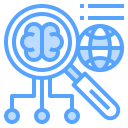Optimizing Marketing Campaigns Through AI-Powered Customer Analytics
Understanding AI-Powered Customer Analytics
The Evolution of Customer Data Analysis
The transition from manual data analysis to AI-driven techniques has marked a significant leap in marketing intelligence. Traditional methods often relied on simple segmentation and historical data, which could not account for the ever-evolving nature of consumer behavior. As AI technologies like natural language processing and predictive modeling emerge, businesses can now process and interpret massive datasets in real-time. This shift empowers marketers to identify emerging trends and opportunities with far greater accuracy, ultimately enabling smarter, faster decision-making in campaign strategy.
Unpacking Machine Learning Algorithms
Machine learning algorithms are the powerhouse behind AI analytics, constantly learning from new inputs to improve their predictive capacity. These models can segment audiences based on subtle behavioral cues, detect sentiment, and even predict future customer actions. This form of automation reduces human bias and streamlines the often overwhelming process of data analysis. By leveraging neural networks, clustering techniques, and regression models, marketers gain a richer, multi-dimensional view of their customer base, allowing for smarter targeting and more effective campaign personalization.
The Importance of Real-Time Insights
In today’s rapidly changing market, being able to act on data as it happens is a critical differentiator. AI-powered systems process incoming customer data at lightning speed, delivering actionable insights to marketers in real time. Whether it’s identifying an immediate opportunity to engage a customer or spotting a shift in buying habits, immediate feedback enables marketers to adjust their messaging and offers dynamically. This responsiveness not only drives higher engagement rates but also fosters lasting customer loyalty through timely, relevant interactions.

Advanced Attribution Modeling
Attribution modeling has become significantly more sophisticated with AI, allowing marketers to track and value every touchpoint along the customer journey. AI-driven models can process countless data points, uncovering the real drivers behind conversions rather than relying on last-click or simplistic rules. This clarity helps marketers understand which channels, messages, and interactions are most influential, enabling smarter allocation of resources in subsequent campaigns. AI attribution eliminates much of the guesswork, ensuring each part of the marketing ecosystem contributes to growth in a measurable way.
Automated Reporting and Performance Dashboards
The speed and complexity of modern marketing campaigns demand equally agile reporting tools. AI-driven analytics platforms automatically compile performance metrics, visualize key data, and deliver insights without manual input. Customizable dashboards can track campaign KPIs in real time, highlight anomalies, and alert teams to emerging issues. This instant access to relevant data shortens response time and fosters a culture of data-driven decision-making. Automated reporting ensures that strategic optimizations are always grounded in accurate, up-to-date information.
Enabling Data-Driven Campaign Iteration
Continuous improvement is at the core of successful marketing in the digital age. AI analytics empower marketers to experiment, test, and refine campaigns with unprecedented efficiency. Through A/B testing and predictive analysis, AI identifies high-performing elements and suggests modifications to underperforming assets. With each iteration, campaigns become more effective, reducing waste and enhancing the overall customer experience. This agile, data-driven approach moves marketing from a set-it-and-forget-it mentality to an ongoing pursuit of excellence.
